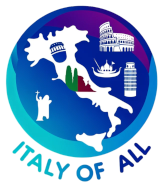The province of Cremona, situated in the Lombardy region of northern Italy, is renowned for its rich musical heritage, particularly in violin making, and its significant agricultural output. Known for its tranquil landscapes along the Po River and the cultivation of crops central to Italian cuisine, Cremona is a blend of cultural depth and agricultural vitality.
Geographically, Cremona is characterized by its flat, fertile plains that are part of the larger Po Valley. The province is primarily agricultural, with fields of cereals, rice, and corn extending across the landscape. The Po River, Italy’s longest river, flows through the province, enhancing the area’s fertility and contributing to its prominence as an agricultural hub.
Historically, Cremona has a notable history dating back to ancient Roman times when it was founded as a military colony. Over the centuries, it has been an important urban center due to its strategic location along the Po River. In the Middle Ages, Cremona became a significant center for music and craftsmanship, particularly for the production of stringed instruments.
Culturally, Cremona is globally celebrated for its tradition of violin making, a craft that has been honed over centuries and continues today with artisans upholding the methods of legendary luthiers like Antonio Stradivari and Giuseppe Guarneri. The city hosts the Stradivari Museum, which is dedicated to the art of violin making and the life of this master luthier. The province also has a rich opera and classical music scene, underpinned by this historical legacy.
Cuisine in Cremona reflects the agricultural produce of the region. The province is famous for “Torrone di Cremona,” a nougat made with honey, egg whites, and almonds, which is traditionally prepared during the Christmas season. Other local specialties include “Mostarda di Cremona,” a condiment made of candied fruit and a mustard-flavored syrup, often served with boiled meats or cheeses.
Economically, Cremona’s economy is largely driven by agriculture, with significant production of dairy products, particularly cheese such as Grana Padano and Provolone. The food processing industry is also prominent, transforming local agricultural products into goods consumed both domestically and internationally. Moreover, Cremona’s reputation in music craftsmanship continues to contribute to its economy, attracting tourists and professionals interested in high-quality stringed instruments.
Despite challenges such as the need to balance modern development with the preservation of its artisanal traditions and natural resources, Cremona is actively engaged in maintaining its cultural heritage while promoting sustainable agricultural practices.
Overall, the province of Cremona offers a compelling mix of cultural richness and agricultural productivity. Its ongoing initiatives to foster sustainable development while preserving its unique historical and cultural identity ensure its continued significance in Italy’s cultural and economic landscape.
Comuni in Cremona Province:
- Bonemerse
- Acquanegra Cremonese
- Agnadello
- Bagnolo Cremasco
- Annicco
- Bordolano
- Campagnola Cremasca
- Casalmorano
- Castelleone
- Capergnanica
- Cappella de’ Picenardi
- Casale Cremasco-Vidolasco
- Capralba
- Casalbuttano ed Uniti
- Casaletto di Sopra
- ** Castel Gabbiano
- Castelverde
- Casteldidone
- Casalmaggiore
- Calvatone
- Cavacurta
- Cicognolo
- CremaCremella
- Cervignano d’Adda
- Cremosano
- Cumignano sul Naviglio
- ** Drizzona
- Derovere
- Formigara
- Cremona
- Corte de’ Cortesi con Cignone
- Cingia de’ Botti
- Credera Rubbiano
- Cornovecchio
- Dovera
- Madignano
- Grumello Cremonese ed Uniti
- Martignana di Po
- Isola Dovarese
- Magnacavallo
- Gussola
- GengaGenivolta
- Malagnino
- Gabbioneta-Binanuova
- Montodine
- Offanengo
- Moscazzano
- Pandino
- Monte Cremasco
- Paderno Ponchielli
- Ostiano
- Ripalta Arpina
- Persico Dosimo
- Piadena Drizzona
- Pescarolo ed Uniti
- Ripalta Guerina
- Pianengo
- Ricengo
- Ripalta Cremasca
- Pizzighettone
- Pessina Cremonese
- Romana (SS) Romanengo
- Rivolta d’Adda
- Pieve d’Olmi
- Robecco d’Oglio
- Pieranica
- Soresina
- San Giovanni in Croce
- Stagno Lombardo
- Spino d’Adda
- Solarolo Rainerio
- Spineda
- Spinadesco
- Scandolara Ravara
- San Daniele Po
- Sergnano
- San Martino del Lago
- Scandolara Ripa d’Oglio
- Sospiro
- Trigolo
- Torlino Vimercati
- Torrazzo
- Trescore Cremasco
- Voltido
- Vaiano Cremasco
- Zeme
- Torre de’ Picenardi
- Volongo
- Vailate
